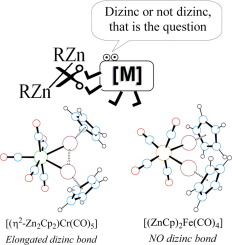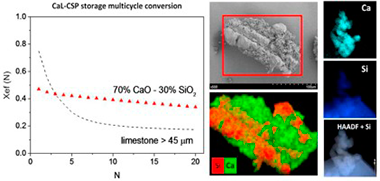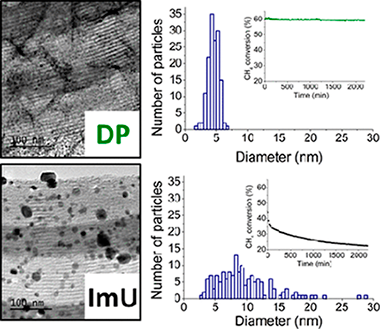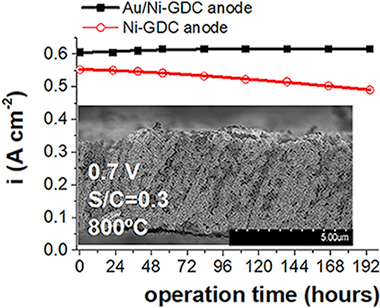Artículos SCI
2018
2018
Reactividad de Sólidos
The dizinc bond as a ligand: A computational study of elongated dizinc bonds
Ayala, R; Carmona, E; Galindo, AInorganic Chimica Acta, 470 (2018) 197-205
Show abstract ▽

Following the synthesis of [Zn-2(eta(2)-C5Me5)(2)] (in short [Zn2Cp*(2)]) many complexes of the directly bonded Zn-Zn unit were prepared and characterized, leading to the recognition of an isolobal analogy between the Zn-Zn bond and the molecule of dihydrogen. Prompted by these results, we have investigated eta(2)-eta(2)-coordination of [Zn2Cp2] and [Zn2Ph2] (Cp = C5H5, Ph = C6H5) to several selected transition metal fragments and report herein the results of a QTAIM study of complexes [(ZnR)(2)Fe(CO)(4)], [(eta(2)-Zn2R2)M(CO)(5)]] and [(eta(2)-Zn2R2)Pd(PR'(3))(2)] (for R = Cp, Ph; M = Cr, Mo, W; and R' = F, H, Me). A decrease of rho(BCP), Delta(2) rho(BCP) and delocalization indexes delta(Zn, Zn), relative to corresponding values in the parent molecules of [Zn2Cp2] and [Zn2Ph2], accompanied dizinc coordination. In most cases the computed d(Zn, Zn) parameters were indicative of significant electron density sharing between the two Zn atoms. Nevertheless, the interaction with [Fe(CO)(4)] resulted in oxidative cleavage of the coordinated Zn-Zn bond, due to high pi backdonation to the sigma* Zn-2 MO as deduced from the delta(M, O-CO) index. The Zn-Zn bond critical points identified in our study are discussed. The computed Zn-Zn contacts concentrate in the range 2.44-2.58 angstrom, and we propose that this interval corresponds to elongated dizinc bonds.
Enero, 2018 | DOI: 10.1016/j.ica.2017.06.008
Reactividad de Sólidos
Low-cost Ca-based composites synthesized by biotemplate method for thermochemical energy storage of concentrated solar power
Benitez-Guerrero, M; Valverde, JM; Perejon, A; Sanchez-Jimenez, PE; Perez-Maquecla, LAApplied Energy, 210 (2018) 108-116
Show abstract ▽

An ever more environmentally conscious society demands the use of green, sustainable and high-efficiency renewable energy resources. However, large-scale energy storage remains a challenge for a deep penetration of power produced from renewables into the grid. The Calcium-Looping (CaL) process, based on the reversible carbonation/calcination of CaO, is a promising technology for thermochemical energy storage (TCES) in Concentrated Solar Power (CSP) plants. Natural limestone to be used as CaO precursor is cheap, non-toxic and abundant. Nevertheless, recent works have shown that carbonation of CaO derived limestone at optimum conditions for TCES is limited by pore-plugging, which leads to severe deactivation for large enough particles to be employed in practice. In our work, we have synthesized inexpensive CaO/SiO2 composites by means of a biotemplate method using rice husk as support. The morphological and compositional features of the biomorphic materials synthesized help improve the CaO multicycle activity under optimum CSP storage conditions and for particles sufficiently large to be managed in practical processes.
Enero, 2018 | DOI: 10.1016/j.apenergy.2017.10.109
Materiales y Procesos Catalíticos de Interés Ambiental y Energético
Nickel Particles Selectively Confined in the Mesoporous Channels of SBA-15 Yielding a Very Stable Catalyst for DRM Reaction
Rodriguez-Gomez, A; Pereniguez, R; Caballero, AJournal of Physical Chemistry B, 122 (2018) 500-510
Show abstract ▽

A series of four Ni catalysts supported on SBA-15 and on a high SiO2 surface area have been prepared by modified impregnation (ImU) and deposition-precipitation (DP) methods. The catalysts have been extensively characterized, including in situ XAS (bulk sensitive) and XPS (surface sensitive) techniques, and their catalytic activities evaluated in the dry reforming reaction of methane (DRM). The combined use of XPS and XAS has allowed us to determine the location of nickel particles on each catalyst after reduction at high temperature (750 degrees C). Both Ni/SiO2-DP and Ni/SBA-15-DP catalysts yield well-dispersed and homogeneous metallic phases mainly located in the mesoporosity of both supports. On the contrary, the Ni/SiO2-ImU and Ni/SBA-15-ImU catalysts present a bimodal distribution of the reduced nickel phase, with nickel metallic particles located out and into the mesoporous structure of SiO2 or the SBA-15 channels. The Ni/SBA-15-DP catalyst was found the most stable and performing system, with a very low level of carbon deposition, about an order of magnitude lower than the equivalent ImU catalyst. This outstanding performance comes from the confinement of small and homogeneous nickel particles in the mesoporous channels of SBA-15, which, in strong interaction with the support, are resistant to sintering and coke deposition during the demanding reaction conditions of DRM.
Enero, 2018 | DOI: 10.1021/acs.jpcb.7b03835
Nanotecnología en Superficies y Plasma
Microstructural engineering and use of efficient poison resistant Au-doped Ni-GDC ultrathin anodes in methane-fed solid oxide fuel cells
Garcia-Garcia, FJ; Yubero, F; Gonzalez-Elipe, AR; Lambert, RMInternational Journal of Refractory Metals & Hard Materials, 43 (2018) 885-893
Show abstract ▽

Ultrathin porous solid oxide fuel cell (SOFC) anodes consisting of nickel-gadolinia-dopedceria (Ni-GDC) cermets with a unique porous micro-columnar architecture with intimate contact between the GDC and the Ni phases were made by magnetron sputtering at an oblique deposition angle and characterised in detail by a variety of methods prior to use in hydrogen or methane-fuelled SOFCs. These Ni-GDC anodes exhibited excellent transport properties, were robust under thermal cycling and resistant to delamination from the underlying yttria-stabilised zirconia electrolyte. Similarly prepared Au-doped Ni-GDC anodes exhibited the same morphology, porosity and durability. The gold associated exclusively with the Ni component in which it was present as a surface alloy. Strikingly, whatever their treatment, a substantial amount of Ce3+ persisted in the anodes, even after operation at 800 degrees C under fuel cell conditions. With hydrogen as fuel, the un-doped and Au doped Ni-GDC anodes exhibited identical electrochemical performances, comparable to that of much thicker commercial state-of-the-art Ni-GDC anodes. However, under steam reforming conditions with CH4/H(2)0 mixtures the behaviour of the Au-doped Ni-GDC anodes were far superior, exhibiting retention of good power density and dramatically improved resistance to deactivation by carbon deposition. Thus two distinct beneficial effects contributed to overall performance: persistence of Ce3+ in the working anodes could induce a strong metal-support interaction with Ni that enhanced the catalytic oxidation of methane, while formation of a Ni Au surface alloy that inhibited carbonisation and poisoning of the active nickel surface.
Enero, 2018 | DOI: 10.1016/j.ijhydene.2017.11.020
Reactividad de Sólidos
Corrigendum to “Dense graphene nanoplatelet/yttria tetragonal zirconia composites: Processing, hardness and electrical conductivity” [Ceram. Int. 43 (2017) 11743–11752]
Gallardo-Lopez, A; Marquez-Abril, I; Morales-Rodriguez, A; Munoz, A; Poyato, RCeramics International, 44 (2018) 1225-1225
Show abstract ▽
- ‹ anterior
- 177 of 420
- siguiente ›














